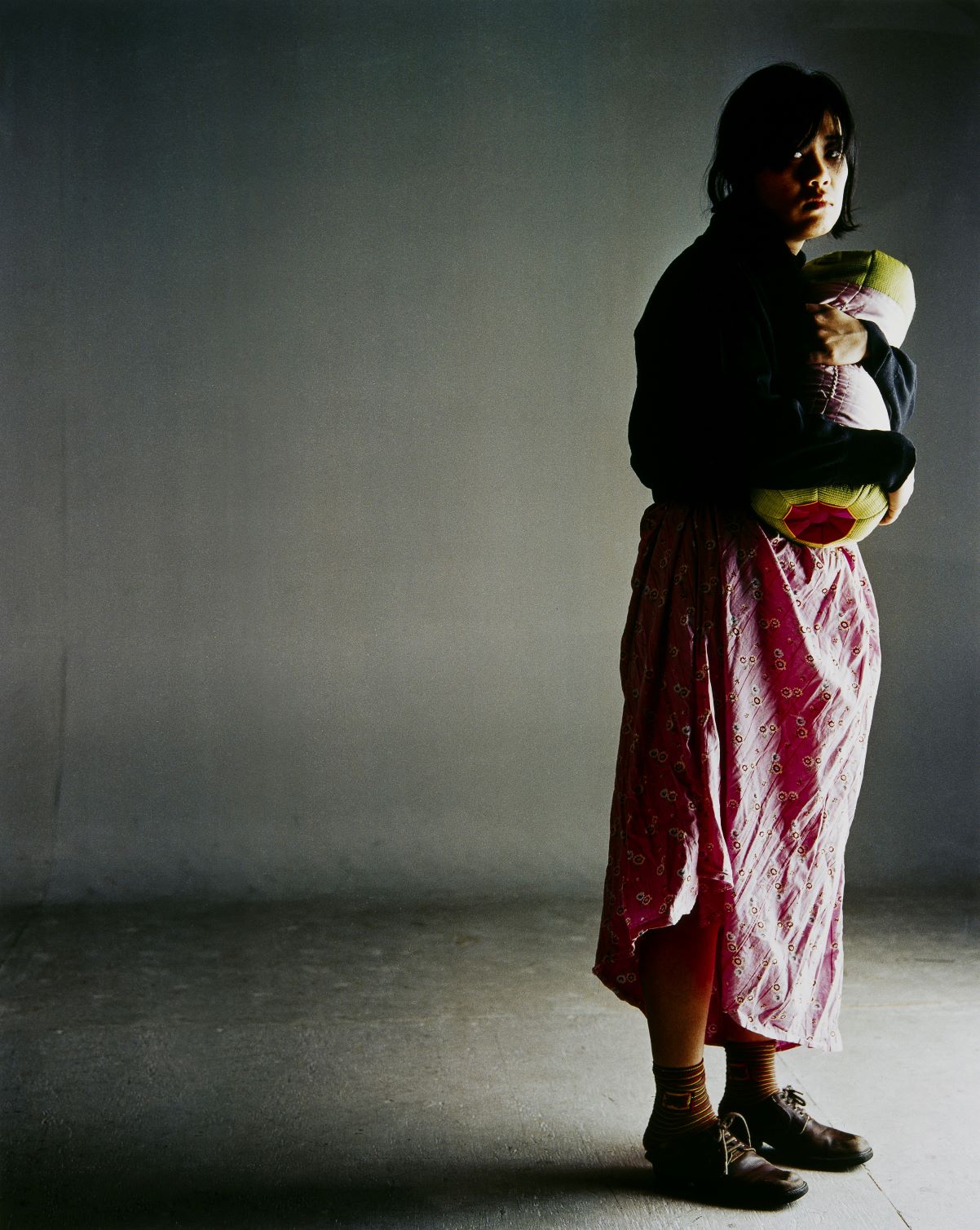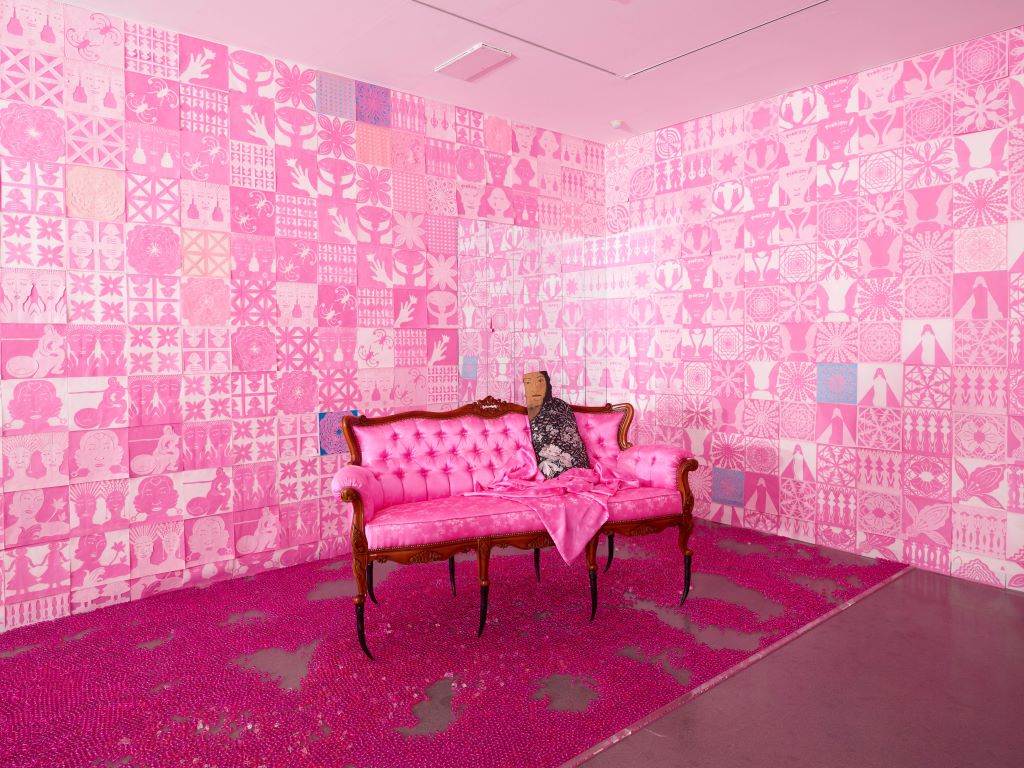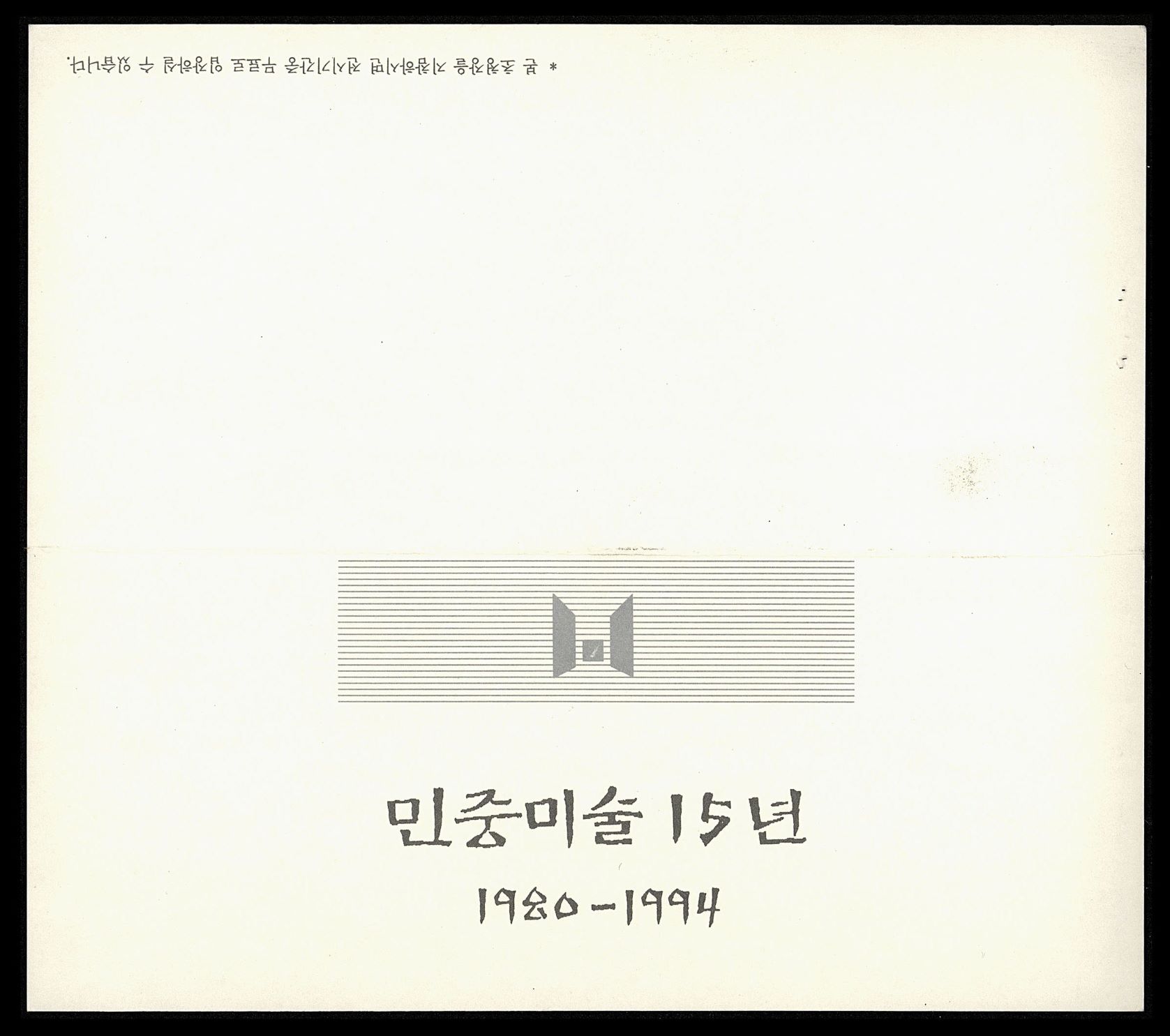
Park Youngsook, Mad Women Project-Mad Women #1, 1999, C-print, 150×150cm. MMCA collection
Feminist art
* Source: Multilingual Glossary of Korean Art. Korea Arts Management Service
Related
-

National Art Association
An art association established in November 1985 by a collective of grassroots artists, and often also referred to as Minmihyeop. The association sought to organize artists and groups who represented the different movements within Minjung Art and to represent their varied ideas and interests. In 1995, the original association was reformed into the National Korean People’s Artists Association [Jeonguk minjok misurin yeonhap]. In turn, this was the predecessor of the Korean People’s Artists Association [Minjok misurin hyeophoe], a corporation founded in 2000.
-

Feminism
Feminism can be defined as any activism or advocacy taken to challenge sexist inequality and the patriarchal formation of society. The notion of equal rights for men and women popularly emerged in Western culture during the 19th century, and feminism as a transnational political movement saw substantive legal breakthroughs with the rise of suffragism and the enfranchisement of women in various countries in the late 19th and early 20th century. Despite these legal gains women remained widely discriminated against, and in the 1950s and 1960s so-called second wave feminists in the West began to challenge the cultural conventions and institutional structural formations behind this continued inequality. Inspired by this approach within the cultural arena, a broad movement developed in the art world among artists, academics and organizers to challenge the patriarchal historical construction and institutional structure of art history. One of the most important works in this regard was Linda Nochlin’s text, Why Have There Been No Great Women Artists? written in 1971. Since the 1970s, art world institutions have made various efforts to combat gender inequality in fields such as art criticism and exhibition planning. In addition the feminist approach to creating and curating art has created various discourses to present women’s experiences, perspectives, and challenges to the patriarchal art world establishment at a global level. The first feminist art movement in Korea started in 1986 with the October Gathering’s exhibition organized by Kim Insoon, Yun Suknam, and Kim Djin-suk and held in Min Art Gallery [Geurim Madang Min]. Advancing the cause of feminist art was a task also undertaken by the Women’s Art Research Society [Yeoseong misul yeonguhoe] under National Art Association [Minjok misul hyeopuihoe] in 1987.
Find More
-
![Women's art [yeoseong misul]](/admin/uploadGoods/87afde62-e10f-4272-96f4-4d55236089bb.jpg)
Women's art [yeoseong misul]
Yeoseong misul, or "women's art," is a term that distinguishes artworks that are produced by women from those of men. It is also an umbrella term for "yeoryu misul" and feminist art that emerged in the history of Korean art in the twentieth century. In modern Korea, works of art created by women were referred to as "yeoryu misul" to distinguish between the genders, implying that women's work was inferior to men's. Until the 1970s, the term yeoryu misul was used to separate and disparage women within the male-dominated mainstream art world, but it also came to mean art by women artists that incorporated women's experiences and perspectives. In the 1980s, the Women's Art Research Society [Yeoseong misul yeonguhoe], organized within the Minjung art movement, began to use the term “yeoseong misul” anew. The women artists rejected the term “yeoryu misul,” which disparaged women's work, and wanted to resist the Western ideas of feminist art, which were not in line with Korean conditions. They devised the term yeoseong misul as an alternative. Oh Hyejoo and Min Hyesook defined yeoseong misul as distinct from yeoryu misul, and the former was not merely an expression of femininity but rather art for the liberation of women oppressed by gender and class. In the 1990s, criticism and discussion of the concept of yeoseong misul expanded. Park Shineui agreed with the view that women's issues are issues of all human beings, however, she argued that it is necessary to move away from the rigid thinking within the Minjung art movement that equates yeoseong misul with the liberation movement of working-class women. She also urged that Minjung art should move beyond a limited form of realism and develop diverse mediums and also criticize patriarchal issues within the art world. Kim Hong-hee distinguished between the yeoseong misul born out of the context of the 1980s Minjung art movement and the yeoseong misul that emerged in the context of postmodernism in the early 1990s. Later generations, however, criticized the error of evaluating Korean yeoseong misul based on 1970s feminist art in the United States. They argued that Korean yeoseong misul is a manifestation of feminism itself, which opposed the male-dominated culture, and asserted that it is an independent feminist art that cannot be confined to concepts like yeoseong Minjung misul or Minjung art.
-

Minjung Art
An artistic movement that came to prominence alongside Korea’s democratization movement in the 1980s. Minjung artists often sought to critically portray the violent repression and corruption of the military dictatorship, to represent the experiences of laborers and farmers, and to achieve social change through art. In contrast to abstraction, which constituted the mainstream of 1970s art in Korea, Minjung Art is notable for the use of representational and figurative forms. One possible point of origin for Minjung Art is Oh Yoon’s work in the Reality Group (Hyeonsil dongin). The group was formed in 1969 by Kim Ji-ha, Oh Yoon, and Lim Se-taek. A variety of Minjung art groups were established, including the Reality and Utterance (Hyunsilgwa bareon) in 1979 by Kim Jungheun, Oh Yoon, Joo Jae-hwan, art critic Sung Wan-kyung, and Choi Min, the Gwangju Freedom Artist Association (Gwangju jayu misulin hyeopuihoe) in 1979 by Hong Sungdam and Choi Youl, the Imsulnyeon (The Year Imsul) in 1982, and the Dureong in 1983. These groups all commonly critiqued Western capitalism. In terms of form, Minjung artists adopted traditional and ethnic folk modes of expression using diverse media such as collage, printmaking, oil painting, and photography. Following the 15 Years of Korean Minjoong Arts: 1980-1994 Exhibition at the National Museum of Modern and Contemporary Art, Minjung Art became an accepted part of Korean art history. Overseas, Minjung Art has also become a recognized term that describes this genre and its unique focus on the political and social history of Korea.






